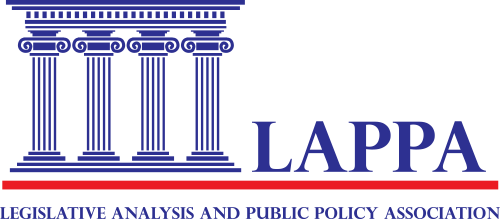Opioid Litigation Proceeds: Summary of State Laws
In this document, the Legislative Analysis and Public Policy Association (LAPPA) examines the state-level legislative response to opioid manufacturer and distributor litigation....

In this document, the Legislative Analysis and Public Policy Association (LAPPA) examines the state-level legislative response to opioid manufacturer and distributor litigation....
Drafted in collaboration with the O’Neill Institute for National and Global Health Law at the Georgetown University Law Center, the purpose of the Model Building the Substance Use Disorder Workforce of the Future Act is to address the current and projected shortage of professions for the substance use disorder workforce, including psychiatrists, psychologists, physicians who are certified in addiction medicine, addiction counselors, social workers, nursing professionals, peer support professionals, and others. This legislation guides states in adopting a strategy that supports and advances immediate, intermediate, and long-term measures to build and sustain an SUD workforce....
In the fall of 2022, West Virginia implemented an opioid and substance misuse prevention program named Game Changer in three public high schools. The first of its kind in the nation program uses student peer leadership programs that focus on building school environments that foster and promote healthy living and staying away from using or experimenting with alcohol and drugs....
To complement the opioid prescribing guidelines that the University of Buffalo Department of Emergency Medicine established in 2016, Dr. Joshua Lynch developed the Medication for Addiction Treatment and Electronic Referrals (MATTERS) program. He saw the need for MATTERs because the “window of opportunity” to help someone with a substance use disorder is small, and he wanted to immediately link a patient who had overdosed to a treatment program that is right for that individual....
Paramedics in the State of New Jersey are permitted to carry and administer buprenorphine to treat acute withdrawal symptoms after having had an opioid overdose reversed with naloxone. The directive, via Executive Order from the State Health Commissioner, simply added buprenorphine to the list of medications available to paramedics in the MICUs and required officials in each county to train paramedics on the protocol. ...
The Addiction and Public Policy Initiative at the O’Neill Institute for National and Global Health Law was established in 2018 through a generous grant from Arnold Ventures. Housed at Georgetown Law, the Addiction and Public Policy Initiative works at the intersection of public health and the law to advance a public health approach to substance use disorder and the overdose epidemic through legal and policy strategies that promote evidence-based treatment, harm reduction, and recovery. This reports highlights O'Neill's accomplishments over the last five years....
The Coordinated Opioid Recovery (CORE) Network, overseen by the Florida Department of Health, the Florida Department of Children and Families, and the Florida Agency for Health Care Administration establishes a system of care for individuals suffering from substance use disorder (SUD). CORE provides a state-supported, coordinated system of addiction care for individuals with SUD and has provided approximately 550,000 services to support patients since its inception in 2022....
This Fact Sheet provides updated information (as of March 2024) about pill presses, devices that can be easily purchased on the Internet, that are responsible for flooding the United States market with untold doses of counterfeit medication....
Tough as a Mother is a non-profit organization, the mission of which is to decrease stigma, educate providers, and connect pregnant and parenting mothers to treatment and recovery supports using “gender-responsive” treatment....
This Fact Sheet details what hospitals can do to better ensure the detection of fentanyl in the urine drug samples of emergency department patients, and what states are doing to make hospitals update their drug screen protocols....


